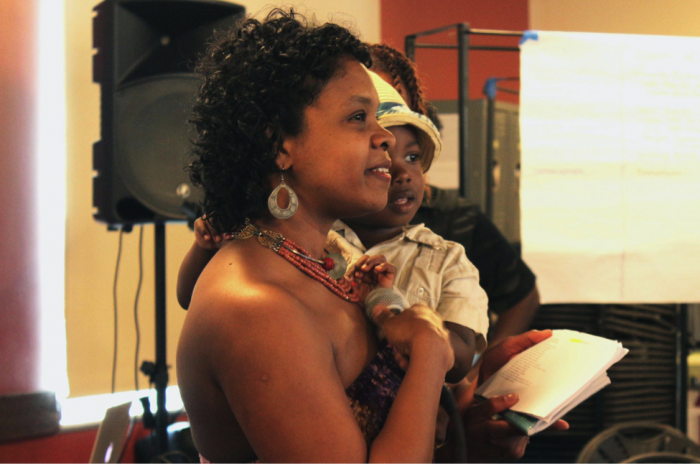
Milvia Pacheco was always told she looked too black to be Latino.
Growing up in Venezuela, many Latinos maligned her for looking different.
“They would make fun of my nose, lips, and big ass,” said Pacheco with tears filling up in her eyes.
According to Monica Rojas, a Seattle-based sociocultural anthropologist and artist, Pacheco’s story is quite common among Afro-Latinos—a term that describes a Latin American or Spanish Caribbean person of black African ancestry.
Rojas says there is a constant battle for visibility of Afro-Latinos in Peru, Mexico, Argentina, Chile, and Venezuela. To battle that invisibility, Rojas founded Movimiento Afrolatino Seattle, known as MÁS, in 2013.
“It is interesting how institutionalized racism has set things in place that erased them from our societies,” said Rojas. “It became a goal of mine to help with that visibility.”
There is a perception that Latinos only descend from a mix of European and indigenous people, she said, excluding those in Latin America with a black African background.
In the United States, Pacheco and thousands of others like her are caught between two broader communities.
As she travelled around the U.S. with a Latin dance group, she noticed that she was treated differently than the other members of the group—for instance, having to wait longer in U.S. Customs at airports.
Pacheco moved to Seattle and met Rojas and MÁS, offering Pacheco an artistic platform where her identity and passion for the arts came together.
“When I started to be part of that community, I do not feel lost but rather I have a home,” said Pacheco about MÁS. “I am no longer running away and being someone else.”
Pacheco now identifies herself as Afro-Latina — and like many others, she expresses her culture through the arts, specifically, music and dancing.
Monica Rojas describes the mission of MÁS. (Video by Randy Salgado)
“I found my community through MÁS,” said Pacheco.
Connecting with MÁS allowed Pacheco to express her emotional struggle through art. After Pacheco performed with MÁS several times, Rojas invited her to become a member of the organization.
Snippet of Pacheco doing a poem of “La Negra,” her nickname, at the MÁS Amor: Tributo a las madres afrolatinas / Tribute to Afrolatino Mothers event. (Video by Randy Salgado)
The number of Afro-Latinos in Spanish, Portuguese, French and English speaking countries in Latin America is estimated to be as many as 150 million. However, it’s difficult to estimate the population of Afro-Latinos in the U.S. because of confusion around the U.S. Census categories, which has separated Hispanic heritage from the question of racial identity (that is set to change for the 2020 Census).
But MÁS has reached out to about 500 community members in Seattle through four community forums and conducted research through dialogue and surveys. Their research found people who identified themselves by a variety of different names: Latino, Afro-Latino, Negro, Mestizo Mezclado, AfroAmericano Indígena, Latino Mezclado, and Garifuna.
Afro-Latino groups have been pushing United States Congress to increase their rights and representation since 2008 for official minority rights in government services.
“Afrolatinos have formed groups that — with the help of international organizations — are seeking political representation, human rights protection, land rights, and greater social and economic opportunities,” according to the Congressional Research Service (CRS) Report for Congress.
Pacheco says MÁS will continue its work to raise the visibility of Afro-Latinos, through art and education events in the Seattle area.
“We have lots to offer through art as a way to give and share who we are,” Pacheco said. “Art is the voice, the messenger to encounter what we’ve been hiding.”

